April 17, 2017
Historic Oregon Gold Mines Today
Some believe that gold was discovered in Oregon back in the 1845 by travelers in their journey to Willamette Valley. Whether or not the rumor is true is still left to be proven. Assuming it was true, it did not start an immediate rush for gold mining in the state. The actual rise of Oregon gold mines started more than 15 years later. During this period, mines are spread throughout the state, but major production was best mainly from two areas:
- Southwest Oregon: in the Klamath Mountains area which includes Coos, Jackson, Douglas, Josephine, and Curry counties.
- Northeast Oregon: in the Blue Mountains area mostly in Grand and Baker counties.
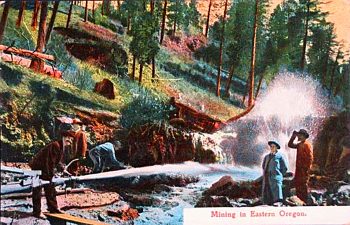 Some of the largest-producing Oregon gold mines were located in the southwest. Gold has been found in both placer and lode deposits. Modern day prospecting activities still revolve around this part of the state.
Some of the largest-producing Oregon gold mines were located in the southwest. Gold has been found in both placer and lode deposits. Modern day prospecting activities still revolve around this part of the state.
In Douglas County, there are several notable locations such as Myrtle, Quines, Last Chance, and Cow creeks. South Umpqua River and all the waters that drain into it are worth prospecting as well. Hydraulic operations, lodes, and placers have been operating in the river.
More than half a million ounces of gold have been found in Jackson County since 1852. All waters in the county have potential to produce gold including Applegate River along with several creeks such as the Sterling, Willow, Elk, and Palmer.
Similar to the creeks in Jackson County, almost all waters in the Josephine County are believed to hide good amount of gold. Illinois River and Josephine Creek are good locations to start but there are some more notable mentions such as Althouse and Galace creeks. Josephine County produced a lot of gold in the past, and maybe you can find more these days.
A series of Oregon gold mines are still active today in the John Day River located in the eastern part of Oregon. Other areas for you to check should include old mining towns for examples Susanville, Bourne, Granite, and Greenhorn. Most of the creeks throughout the John Day River will produce placer gold. If gold panning in the creeks and rivers does not interest you, Oregon offers wide area of public lands where you can use metal detectors. Both eastern and northeast parts of the state have more than enough public land for you to explore–but a gold claim map is advisable. Even the black sand deposits of Oregon beaches (primarily in the Curry and Coos Counties) will yield gold, albeit in very fine sizes.
April 9, 2017
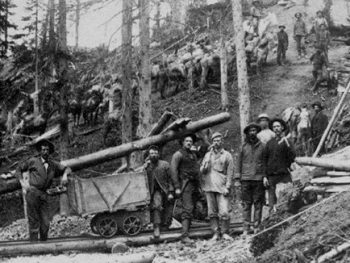 Historic Colorado Gold Mines Today
Historic Colorado Gold Mines Today
In 1858 around the area of present-day Denver, small deposit of gold were discovered. Starting from that day, Colorado gold mines were on the rise. It took only about a year before miners came across an important discovery in the Central City-Idaho Springs district. Gold mining has been a major industry in Colorado since more than a century ago, and in fact it played major role in the establishment of the state.
More than 3 million ounces have been produced by a number of Colorado gold mines. The southeastern part of the state, particularly the Telluride District, made a major contribution to the total production. The same thing for the southwest although most gold found in this part of the state has been a byproduct of other metal mining activities such as silver, lead, and copper. Summit County in Central Colorado contributed about 1 million ounces of gold from both lode and placer deposits.
One of the richest areas was the Breckenridge district. Hydraulic mining was the primary method of production in the creeks. The method of choice in Swan River was dredging, and you can still see some dredge piles today in the area. Another notable location was Frisco District although gold production came as a byproduct. By 1920, there were 41 Colorado gold mines producing more than 500 tons of gold. Today the only gold mine in operation is Cripple Creek & Victor Gold Mine located near Colorado Springs. It is basically an open pit owned by Newmont Mining Corporations. In 2016, the mine produced about 11 tons of gold.
For modern day prospectors, Colorado still has a lot of potential especially in the western and central part of the state. Millions in gold have been found, and there is probably more waiting to be discovered. There does not seem to be another rise for more mines, however. Gold mining is increasingly becoming an interesting recreational activity. Less-friendly terrain also makes the state an ideal place for backpackers to wander around the wilderness and try their luck. Some old abandon gold mines may still contain considerable amounts, and the metal detector is the most dependable equipment for this purpose. The Telluride District in San Miguel County has small placer gold deposits all around the place, but lode gold mining is not financially viable except for large companies due to the low-grade ores that require extra work for them to be profitable. No one knows where the gold is, so there is always an equal chance for everybody.
Historic California Gold Mines Today
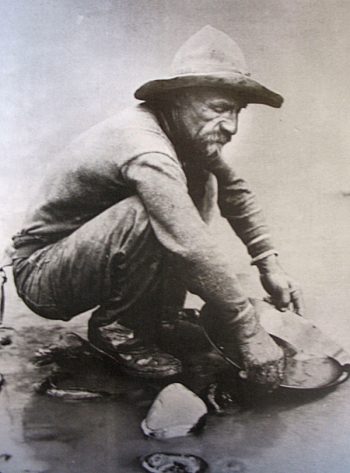 Everyone knows about the California Gold Rush, and it was indeed the most important period of gold discovery in the United States by far. Ever since the first record of gold found by James Marshal on the property owned by John Sutter (present-day Coloma), thousands of people have come to the state and searched for fortunes lying deep in the grounds, creeks, mountains, and rivers. The San Francisco economic and population boom times were also greatly affected by the gold rush. Until today, California gold mines still yield considerable amount of gold nuggets.
Everyone knows about the California Gold Rush, and it was indeed the most important period of gold discovery in the United States by far. Ever since the first record of gold found by James Marshal on the property owned by John Sutter (present-day Coloma), thousands of people have come to the state and searched for fortunes lying deep in the grounds, creeks, mountains, and rivers. The San Francisco economic and population boom times were also greatly affected by the gold rush. Until today, California gold mines still yield considerable amount of gold nuggets.
A large number of mines existed during the gold rush. In 1852, production reached its peak with 3.9 million troy ounces (121 tons) of gold. Extensive mining activity during the early days of gold rush exhausted the state and soon enough the inevitable happened: production crashed. In 1929, the state could only yield about 412,000 troy ounces of gold. It took about 10 years for production to increase; between the period of 1939 and 1941, California soared back with about 44 tons of gold production each year.
Three of the most popular California gold mine districts are as follows:
- First on the list must be the Mother Lode of Sierra Nevada. During 1959, the area produced more than 13 million of troy ounces of gold.
- Followed right behind Mother Lode is Grass Valley-Nevada City district located in Nevada County. In 1959, the district produced 12.6 million troy ounces of gold from both lode and placers.
- Placed in the third is Columbia Basin-Jamestown-Sonora district. Total gold production was about 5.9 million troy ounces.
The northern part of the state seemed to take all the glory when it comes to gold discovery. Its southern counterpart, however, also produces gold albeit underrated. Prior to the famous gold discoveries in the northern part, Spanish and Mexican miners were in the south doing the same thing. Whether or not the state has more gold to offer is questionable due to the strict mining regulations. In 2007, California only produced 9,400 troy ounces of gold from two mines.
Limitations in gold prospecting and explorations have put a halt in the establishments of new California gold mines today. Gold mining companies including small and large scale have been affected by the regulations, but many small prospectors are still active. A good number of mines are still in existence; San Bernardino County, the largest county in the U.S. by area, has several popular districts including Dale, Holcomb, Stedman, and Silver Mountain.
April 4, 2017
Arizona Gold Mines and Districts
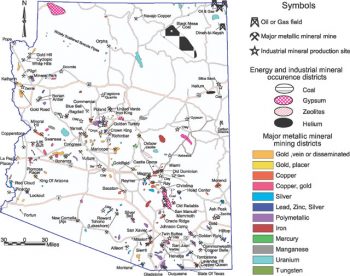 The rise of Arizona gold mines started in 1774, and the state has produced 17 million troy ounces (498 tons) of gold so far. The last big gold mine to operate in Arizona was Gold Road located at Oatman, which ceased operation in 1998. However, explorations are still active today and gold still can be found as a byproduct of copper mining. In 2006, all gold production in Arizona came as a byproduct of copper mining.
The rise of Arizona gold mines started in 1774, and the state has produced 17 million troy ounces (498 tons) of gold so far. The last big gold mine to operate in Arizona was Gold Road located at Oatman, which ceased operation in 1998. However, explorations are still active today and gold still can be found as a byproduct of copper mining. In 2006, all gold production in Arizona came as a byproduct of copper mining.
Despite the absence of large-scale gold exploration, there are still many places where some smaller Arizona gold mines and placers can yield decent yields:
Yavapai County
- Lynx Creek District: placer deposits make up the majority of gold production from this area.
- Rich Hill District: this place has long history of large gold nugget discoveries.
- Big Bug District: most gold recovered from the district has come from lode deposits.
- Jerome District: the largest gold-producing district in Arizona.
Mohave County
- San Francisco District: this district has produced more than 2 million ounces of gold thus far.
- Gold Basin District: lode and placer deposits, and great metal detecting.
- Wallapai District: gold as byproduct from commercial-scale mining activities.
- Maynard Mining District: the gold from this area has been in wire-shaped specimens.
Cochise County
- Dos Cabezas District: both placers and lode deposits can be found in the area.
- Bisbee District: almost all gold recovered from the district came as byproduct, but it is the largest gold producer in the county.
- Huachuca District: large gold nuggets of considerable size have been found here.
Yuma County
- Dome District: the place has been explored in large scale since 1858.
- Castle Dome District: most productions have come from lode deposits.
- La Paz District: gold has only been found in recent years using metal detectors.
- Plomosa District: gold placers produce most of the gold.
Maricopa County
- Vulture District: lode has made most of the gold productions in the district.
- San Damingo and Hassayampa
Gold has been found all across the state of Arizona, but most of it is a byproduct of copper mining. While there are no big commercial-scale Arizona gold mines today, some believe that placers are still waiting to be found. It’s best to buy an Arizona gold claims map to boost your chances as the location of gold claims usually gets you closest to the gold. And also remember the biggest challenge with prospecting in Arizona is the lack of water, so metal detectors are a good piece of equipment to use here in the state. If you are an adventurous person don’t forget to carry one while you are out prospecting. Even if you don’t find gold during your outdoor adventure, at least you get to enjoy beauty of the desert and experience the excitement gold prospecting just like prospectors did decades ago.
Alaska Gold Mines
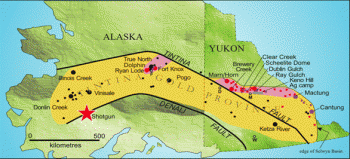 When it comes to gold mining, Alaska has always been one of the most preferable destinations in the country. The long running record gold discoveries have created seemingly endless creations of Alaska gold mines up to today. Tons after tons of gold have been found, but it seems the state has endless reserves. As a matter of fact, Alaska is getting busier these days thanks to the rising price of the shiny yellow. Mountains along with creeks and rivers, and basically the wilderness of Alaska offer plenty of opportunities to every miner. It is worth mentioning that mining regulations in Alaska are more miner-friendly compared to other states as well. In case you have not noticed, large-scale gold mining operations are slowly disappearing in many states, but that is not the case in Alaska.
When it comes to gold mining, Alaska has always been one of the most preferable destinations in the country. The long running record gold discoveries have created seemingly endless creations of Alaska gold mines up to today. Tons after tons of gold have been found, but it seems the state has endless reserves. As a matter of fact, Alaska is getting busier these days thanks to the rising price of the shiny yellow. Mountains along with creeks and rivers, and basically the wilderness of Alaska offer plenty of opportunities to every miner. It is worth mentioning that mining regulations in Alaska are more miner-friendly compared to other states as well. In case you have not noticed, large-scale gold mining operations are slowly disappearing in many states, but that is not the case in Alaska.
Gold exploration in Alaska started in 1848 (by then Alaska was still part of the Russian Empire), but it did not produce any gold. In 1870 (the United States purchased Alaska from Russian Empire in 1867 for 7.2 million U.S dollars or approximately two cents per acre), shortly afterwards one of the first Alaska gold mines was established in placers located southeast of Juneau.
From 1880 to 2005, Alaska has produced a total of 1,250,000 kg of gold. Discoveries continued to happen, and the state yielded 12.7% of all U.S. gold productions with its 873,984 troy ounces of gold in 2015. The largest producer is Fort Knox mine, which is basically a cyanide leaching operation at a large open pit in Fairbanks mining district. Other notable Alaska gold mines include the Pogo, Kensington, and Greens Creek.
When people think of gold mining in the United States, Alaska is among the first things that come to mind. Gold is abundant, and prospectors have high hopes of finding great amounts of it. Large Alaska gold nuggets have been found and more are still lying in ground waiting to be discovered.
Despite the alluring opportunities of gold discovery, mostly serious professional miners with adequate equipment for the job have a real chance of digging out the gold. Millions of square miles are available for gold prospecting, but road access to those areas posts quite a challenge. A considerable portion of Alaska is covered with tundra; there is just too much overburden, making it less ideal for recreational prospectors. If there is a gold mining district with a good record of discovery, chances are the area is covered in gold claims.
If remote backpacking brings you excitement, you will probably fit just fine with the entire gold rush in Alaska. Remember that it may require some tough hiking just to reach your destination. The good news is the harder it is to reach your destination, the more likely you are to find gold. Pro Tip: Buy a gold claim map from a reputable dealer before you go anywhere. It’s one of the most important pieces of equipment a gold miner owns.
March 30, 2017
Remembering Wyoming Gold Rush History
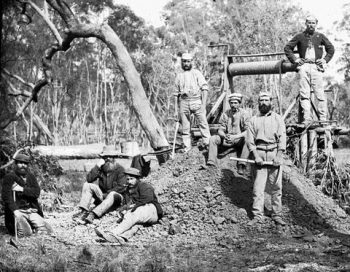 A brief period of Wyoming gold rush history started in 1842 and ended in 1875. One of the first discoveries occurred in 1842 at the South Pass-Atlantic City district (located in present-day Fremont County). Even after the first discovery, placers only worked intermittently until 1867. Other districts in the area include Twin Creek, Oregon Buttes, and Lewiston. Production records were quite poor.
A brief period of Wyoming gold rush history started in 1842 and ended in 1875. One of the first discoveries occurred in 1842 at the South Pass-Atlantic City district (located in present-day Fremont County). Even after the first discovery, placers only worked intermittently until 1867. Other districts in the area include Twin Creek, Oregon Buttes, and Lewiston. Production records were quite poor.
The Wyoming gold rush and prospecting activity kept on going, nevertheless, and richer gold deposits were found in Granite Mountain Range in the central part of the state, Tin Cup, Rattlesnake Hills, and Seminoe districts. Again, each area only yielded small amounts of gold. It makes sense because Wyoming had limited exploration, but at least show that the area had enough to please prospectors.
For modern day gold prospecting, you may find gold in the Absaroka Mountains. Located in the northwestern part of the state, placer gold deposits in many different locations are recoverable by traditional panning and dredging. Popular spots include Sunlight, New World, Stinking Water, and Kirwin. Those areas have seen limited commercial explorations, so recreational prospectors have a good chance of finding gold there.
During the Wyoming Gold Rush, initially, the towns of Atlantic City, South Pass City, and Miner’s Delight provided enough gold for prospectors and miners. By 1875, the district was nearly deserted by the time gold production reached about 300,000 troy ounces (more than 9,000 kg). In 1962, the same district was mainly used for iron mining.
In general, Wyoming gets little attention when it comes to gold mining compared to its neighboring states. Population density is quite low in Wyoming, so it only makes sense that many of its’ areas have been poorly explored. Despite the historical gold discovery, Wyoming is most commonly associated with cattle ranching and natural gas or oil. Another reason is that the climate in the state is not conducive for gold mining; the winter is harsh and too long for steady mining activity.
The lack of commercial exploration opens the door for recreational gold prospectors to find good gold in the state. Keep in mind that Wyoming is a remote state, so be prepared to face a little bit of difficulties in transportation or communication. Buy a gold claim map. Know where you are at. Gold prospecting today is just about as tough as outdoor adventures get. As long as you are well-prepared and carry all the necessary safety gear, you should be able to handle all circumstances with minimal effort. There is enough public land in Wyoming to cover everybody’s desire for gold.
Washington Gold Rush
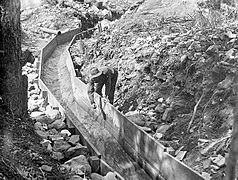 Let us make one thing clear first: the only significant gold rush in Washington took place in 1873 when gold was found in Swauk Creek in the middle of the state. There had been prior reports of gold discoveries, but the gold deposit in Swauk Creek was the one that really caused interest in gold mining in the state. It was a gold rush, but in a much lower scale compared to the one that occurred during the California gold rush. Among the first prospectors during Washington Gold Rush were local farmers who lived nearby Kittitas Valley. As the word spread, more people from all around flocked to the area as well.
Let us make one thing clear first: the only significant gold rush in Washington took place in 1873 when gold was found in Swauk Creek in the middle of the state. There had been prior reports of gold discoveries, but the gold deposit in Swauk Creek was the one that really caused interest in gold mining in the state. It was a gold rush, but in a much lower scale compared to the one that occurred during the California gold rush. Among the first prospectors during Washington Gold Rush were local farmers who lived nearby Kittitas Valley. As the word spread, more people from all around flocked to the area as well.
The Washington Gold Rush did not last long since early prospectors basically depleted the gold resources in the state by early 1880’s. It was followed by a shift of interest as most miners turned into lode production instead of gold. Early prospectors abandoned the worked out area, but this allowed Chinese miners to try their lucks in the same ground. Working conditions in China at that time were harsh, so even less productive ground was good enough. In 1892, a post office was established and the mining area changed its name to Liberty. Even in this less-than-ideal ground, mining activities continued for many generations. Unlike in many other mining camps where unruly behaviors were common, Liberty was much more conducive hence improved living conditions.
In modern days, there are very few (if any) commercial gold mining operations in Washington. Gold prospecting is now a recreational activity and the government actually allows for open recreational gold panning as well. The Washington State Department of Natural Resources provides a gold map to show where gold deposits have been found; however, not all areas are open for recreational panning. Unless withdrawn, only the areas/federal lands managed by the U.S. Bureau of Land Management and U.S. Forest Service are open for gold panning and prospecting.
Recreational gold prospecting and mining requires no permit from DNR, but it does not mean you can trespass on closed properties as you like. Get a gold claim map.Make sure you ask permissions and use only simple tools (it is best to avoid anything with a motor).
Learning about the brief period of the Washington Gold Rush can be quite fun as you get different experiences from the usual California-style. One of the most important things to remember is that the stream bed is not just the place that holds gold, but is also a place to enjoy outdoor adventures and interact with many kinds of animals. Try to minimize disturbance to the ecosystem by limiting your work area. Chances are small that you will find any gold, but the activities can be a good learning experience and exciting outdoor adventure at the same time.
Utah Gold Rush History
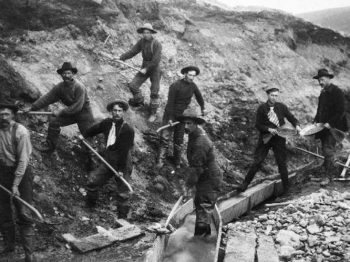 Among many other states in the country, the Utah Gold Rush is a little bit peculiar. Most gold found in the state so far is not from actual gold mines, but as a byproduct of zinc, copper, lead, and silver mining. Most of the gold discovered in Utah today is a byproduct of the Bingham Canyon copper mine located southwest of Salt Lake City. In 2013 alone, the mine produced more than 192,000 troy ounces (almost 6,000 kg) of gold. Over its operational years, Bingham Canyon has produced over 23 million ounces (more than 652 US tons) of gold. This makes Utah one of the most productive gold sources in the country; that is not bad considering that the mine was intended to dig out another type of metal. The last major gold mine operated in Utah was the Barneys Canyon in Salt Lake City; it stopped production in 2001, but currently is still recovering gold from its heap leaching pads.
Among many other states in the country, the Utah Gold Rush is a little bit peculiar. Most gold found in the state so far is not from actual gold mines, but as a byproduct of zinc, copper, lead, and silver mining. Most of the gold discovered in Utah today is a byproduct of the Bingham Canyon copper mine located southwest of Salt Lake City. In 2013 alone, the mine produced more than 192,000 troy ounces (almost 6,000 kg) of gold. Over its operational years, Bingham Canyon has produced over 23 million ounces (more than 652 US tons) of gold. This makes Utah one of the most productive gold sources in the country; that is not bad considering that the mine was intended to dig out another type of metal. The last major gold mine operated in Utah was the Barneys Canyon in Salt Lake City; it stopped production in 2001, but currently is still recovering gold from its heap leaching pads.
Nobody expected there was going to be a Utah Gold Rush, but the aforementioned statistics suggested that the state actually hid plenty of gold under its soil. Despite the large amount of gold (as byproduct), most gold prospecting activities in Utah have only yielded small amount of discoveries. The gold was so very fine that it never quite attracted many people to do more explorations. Creeks and rivers have gold, but the metal is very fine too, so extra care when panning in required. Some potential areas to find gold in the state are as follows:
- Colorado River (probably also very fine gold)
- Green River especially below the Flaming George Reservoir
- Creeks draining the Henry Mountains
- San Juan River
- Johnson and Recapture Creeks
One of the biggest concerns with gold prospecting is the lack of water; it could also be the main reason that Utah Gold Rush never really happened. While the state has large amount of other minerals and metals, chances of gold recovery are small. However, gold prospecting in modern days may reveal many other deposits with better improved equipment such as metal detector. Another concern is that the gold is usually very fine. Capturing gold takes extra care or the gold will just be lost in the process.
For those who are interested in gold prospecting, Utah offers abundance of gold claim free public land open for recreational gold panning. There is no permit required as long as you use non-motorized methods such as dry-washing and panning. It takes a lot of effort to find gold in Utah indeed, but that should not stop the adventurous from trying.
March 24, 2017
South Dakota Gold Rush History
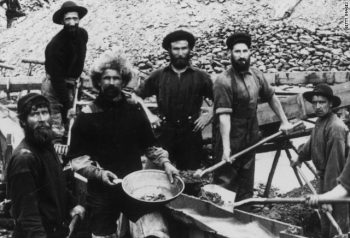 Currently the only active gold mine in South Dakota is the Wharf Mine, but it does not change the fact that the state has a rich history of gold discovery. The South Dakota Gold Rush was a real thing, and actually many prospectors are still lurking around and hope to get their hands on some of the precious yellow.
Currently the only active gold mine in South Dakota is the Wharf Mine, but it does not change the fact that the state has a rich history of gold discovery. The South Dakota Gold Rush was a real thing, and actually many prospectors are still lurking around and hope to get their hands on some of the precious yellow.
The South Dakota gold rush started in 1874 after an initial discovery at French Creek. It was a group of men led by General Armstrong Custer who announced the discovery of gold in the Black Hills (an area near present-day Custer). Back then the area was inhabited by Sioux Indians but it did not stop people from coming to the area and trying to find fortunes from gold deposits. The Black Hills are located in Custer County, named after the general.
Although the initial discoveries yielded relatively small amounts of gold, richer deposits on Whitewood and Deadwood were found soon after that. Both locations confirmed that the Black Hills hid considerable fortunes for the taking. It was soon followed by the existence of an illegal settlement known as Deadwood; this settlement was considered one of the most dangerous in the United States at that time.
Similar to most historical events of gold discoveries throughout United States, the South Dakota Gold Rush was sprinkled with thousands of people flocking to the area. After several years, most people left and only a small percentage stayed. Homestake Mine, which was the largest and deepest gold mines in North America before it finally ended operation in 2002, was also located in this place. The mine produced about 20 million ounces of gold.
The South Dakota Gold Rush Today
Some people think the gold in South Dakota has been depleted already, but others insist that there are still fortunes to be made. One of the most popular areas for modern days’ gold prospecting is the far western part of the state, particularly near the border of Custer, Pennington, and Lawrence Counties. The area has been extensively explored for more 150 years, yet some believe they can still find gold.
If for some reason you want to try gold panning in South Dakota, please remember that the creeks in the aforementioned locations have probably been claimed or are on private property. Before you rush and go gold prospecting, do some research and make sure you are not trespassing. Bring your gold map and use landmarks as guidance; if in doubt, consult the locals or law enforcement officers you meet.
Basic Oregon Gold Rush History
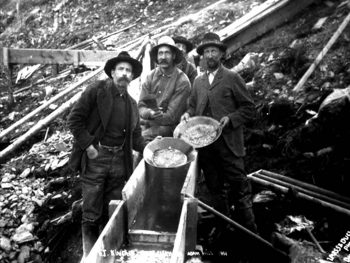 Shortly after the discovery of gold in the Sutter’s Mill in California (which started the California gold rush), another state also started its own lust-for-gold movement: Oregon. Reports of gold discovered in Oregon date back to 1850, but it was not quite enough to spark the Oregon gold rush. Two years later, however, the discovery of rich gold deposits by a group of sailors who headed for Crescent City did the job. The area where the deposit was found is now called Sailors Diggings. Prior to the first documented gold discovery in Southwestern Oregon, the region was pretty much uninhabited, with the exception of Native Americans, fur trappers, and gold prospectors travelling to Mother Lode Country.
Shortly after the discovery of gold in the Sutter’s Mill in California (which started the California gold rush), another state also started its own lust-for-gold movement: Oregon. Reports of gold discovered in Oregon date back to 1850, but it was not quite enough to spark the Oregon gold rush. Two years later, however, the discovery of rich gold deposits by a group of sailors who headed for Crescent City did the job. The area where the deposit was found is now called Sailors Diggings. Prior to the first documented gold discovery in Southwestern Oregon, the region was pretty much uninhabited, with the exception of Native Americans, fur trappers, and gold prospectors travelling to Mother Lode Country.
In 1854, the Oregon gold rush was on its full-scale. A ditch that stretched about eleven miles long was constructed to deliver water to the rich-placer ground. Soon after that, large deposits were found in three different river drainages including the Rogue, Applegate, and Illinois Rivers. Althouse Creek was considered one of the richest; some said that it was prospected by more than 10,000 men during the first decade of the gold rush. Many of those men had been in the Northern California before they came to the creek; unfortunately for them, rich grounds had been already claimed by the time they arrived.
The drive for fortune seemed to know no bounds, and it took only a little while until prospectors realized that there were richer grounds in the area. Nearly every tributary for as long as 50 miles north of California border contained gold. The first period of the Oregon gold rush lasted until 1861, but it continued right away as soon as the discovery of gold in Eastern Oregon. The old mining towns in Southwest Oregon were abandoned, but you can still find them today.
Prospectors are still actively looking for the shiny precious yellow in the state. A few locations on public lands are used for recreational gold prospecting; these areas are not claimed, but they only allow recreational gold panning. Here are some of the best places to engage in outdoor activities and feel the Oregon Gold Rush once again:
- Quartzville Recreation Corridor
- Hellgate Recreation Area
- Gold Nugget Waysides
- Applegate River Access
- Sixes River
- Sharps Creek
- Brice Creek
- Cow Creek Recreation Area
- Oregon Beaches
Most areas only allow the use of traditional tools such as pans, while other may allow heavier machinery as long as you have the required permits for the equipment.
« Previous Page — Next Page »
 Some of the largest-producing Oregon gold mines were located in the southwest. Gold has been found in both placer and lode deposits. Modern day prospecting activities still revolve around this part of the state.
Some of the largest-producing Oregon gold mines were located in the southwest. Gold has been found in both placer and lode deposits. Modern day prospecting activities still revolve around this part of the state.
 Historic Colorado Gold Mines Today
Historic Colorado Gold Mines Today Everyone knows about the
Everyone knows about the  The rise of Arizona gold mines started in 1774, and the state has produced 17 million troy ounces (498 tons) of gold so far. The last big
The rise of Arizona gold mines started in 1774, and the state has produced 17 million troy ounces (498 tons) of gold so far. The last big  When it comes to
When it comes to  A brief period of Wyoming gold rush history started in 1842 and ended in 1875. One of the first discoveries occurred in 1842 at the South Pass-Atlantic City district (located in present-day Fremont County). Even after the first discovery, placers only worked intermittently until 1867. Other districts in the area include Twin Creek, Oregon Buttes, and Lewiston. Production records were quite poor.
A brief period of Wyoming gold rush history started in 1842 and ended in 1875. One of the first discoveries occurred in 1842 at the South Pass-Atlantic City district (located in present-day Fremont County). Even after the first discovery, placers only worked intermittently until 1867. Other districts in the area include Twin Creek, Oregon Buttes, and Lewiston. Production records were quite poor. Let us make one thing clear first: the only significant gold rush in Washington took place in 1873 when gold was found in Swauk Creek in the middle of the state. There had been prior reports of gold discoveries, but the gold deposit in Swauk Creek was the one that really caused interest in
Let us make one thing clear first: the only significant gold rush in Washington took place in 1873 when gold was found in Swauk Creek in the middle of the state. There had been prior reports of gold discoveries, but the gold deposit in Swauk Creek was the one that really caused interest in  Among many other states in the country, the Utah Gold Rush is a little bit peculiar. Most gold found in the state so far is not from actual
Among many other states in the country, the Utah Gold Rush is a little bit peculiar. Most gold found in the state so far is not from actual  Currently the only active gold mine in South Dakota is the Wharf Mine, but it does not change the fact that the state has a rich history of gold discovery. The South Dakota Gold Rush was a real thing, and actually many prospectors are still lurking around and hope to get their hands on some of the precious yellow.
Currently the only active gold mine in South Dakota is the Wharf Mine, but it does not change the fact that the state has a rich history of gold discovery. The South Dakota Gold Rush was a real thing, and actually many prospectors are still lurking around and hope to get their hands on some of the precious yellow. Shortly after the discovery of gold in the Sutter’s Mill in California (which started the
Shortly after the discovery of gold in the Sutter’s Mill in California (which started the 

